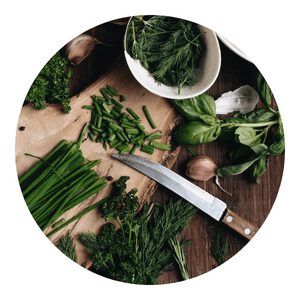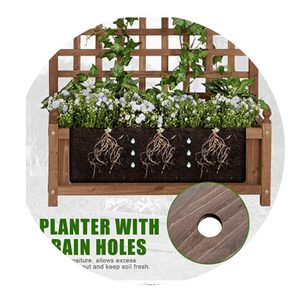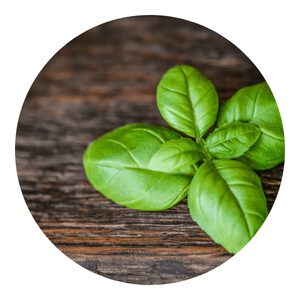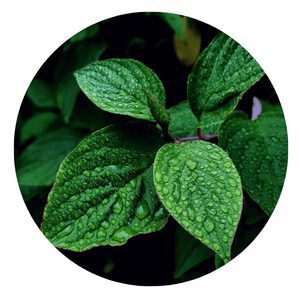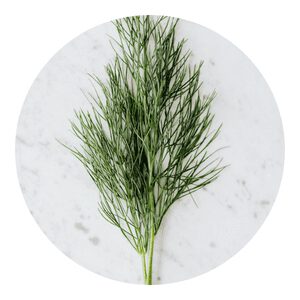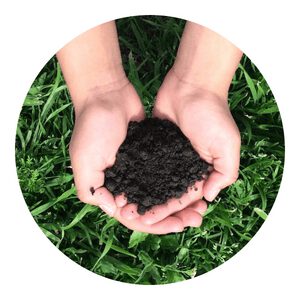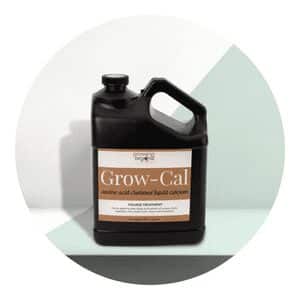How To Grow Organic sage
Chappy the gardener is excited to release his new guide, “How To Grow Organic Sage.” This guide provides tips on how to grow and care for organic sage, as well as how to use it in cooking.
“Organic sage is a versatile herb that can be used in many different dishes,” said chappy.
“I’m excited to share my tips on how to grow and care for this herb so that everyone can enjoy its flavor.”
Sage Menu
What is sage?
Sage is a plant that has been used for centuries for its medicinal properties. It is a member of the mint family and grows in many parts of the world.
Sage has been shown to be effective in treating a variety of conditions, including memory loss, sore throats, and digestive problems.
Uses: Medicinal, culinary, and other
The use of plants for medicinal purposes is as old as human history.
People have been using plants for food, shelter, clothing, and medicine for thousands of years.
Plants are used for medicinal purposes in three main ways: internally, topically, and aromatically.
How to use it: Fresh or dried
There are many different ways to use lavender in your everyday life. You can use it fresh or dried.
Lavender can be used to make tea, as an essential oil, in a diffuser, or as a topical application.
How To Grow Organic Sage
Organic sage is a delicious and fragrant herb that can be used in both savory and sweet dishes. It’s a great addition to poultry, meats, dressings, and desserts.
Sage is easy to grow and can be planted either in the ground or in a pot. Here are some tips on how to grow organic sage:
Start with planting seeds in early spring Once the ground has thawed and it's not too cold The soil must be loose and well-drained Sage thrives in full sun but will grow in part-shade When the plants are big enough, trim the stems And then cut the herb back again before flowering
Chappy The Gardener
How to Grow Organic Sage from Seeds
Growing organic sage from seeds is a simple and economical way to add this flavorful herb to your garden.
Here are some steps to follow:
Choose a sunny spot in your garden with well-draining soil. Sage grows best in full sun and can tolerate a wide range of soil types as long as they are well-draining.
Prepare the soil by loosening it with a fork and removing any weeds or debris. If your soil is particularly poor, consider adding some compost or other organic matter to enrich it.
Sow the sage seeds directly in the ground, following the package instructions for seed spacing and depth. Sage seeds are small, so be careful not to plant them too deeply.
Water the seeds gently, making sure to keep the soil evenly moist but not waterlogged. Sage seeds can be slow to germinate, so be patient and keep the soil moist until the seeds sprout.
Once the sage seedlings are a few inches tall, thin them out so that they are spaced about 12 inches apart. This will give the plants room to grow and ensure that they have adequate sunlight and air circulation.
Water the sage plants regularly, keeping the soil evenly moist but not waterlogged. Sage is drought-tolerant, so it doesn’t need a lot of water, but it will grow best with consistent moisture.
Fertilize the sage plants once a month using a organic fertilizer, or add compost to the soil every few weeks.
By following these steps, you should be able to grow healthy, organic sage from seeds.
How to Grow Organic Sage in Pots
Sage is a hardy herb that is easy to grow in pots.
Here are some tips for growing organic sage in pots:
Choose a pot that is at least 12 inches wide and 12 inches deep, as sage has a deep root system and needs plenty of room to grow.
Use a well-draining potting mix specifically formulated for herbs, or mix your own using equal parts compost, perlite, and peat moss.
Plant sage seeds or starter plants in the pot, making sure to leave enough space between them for the plants to grow.
Water the sage regularly, keeping the soil evenly moist but not waterlogged. Sage is drought-tolerant, so it doesn’t need a lot of water, but it will grow best with consistent moisture.
Place the pot in a sunny location, as sage needs at least six hours of sunlight per day to grow well. A south-facing window or balcony is a good choice.
Fertilize the sage once a month using a balanced organic fertilizer, or add compost to the soil every few weeks.
Prune the sage regularly to encourage new growth and keep the plant looking neat and tidy.
By following these tips, you should be able to grow healthy, organic sage in pots.
How to Grow Organic Sage in the Garden
Sage is an easy-to-grow herb that can be used in both the garden and in the kitchen.
Sage thrives in full sun and well-drained soil. It can be grown from seed or from cuttings.
Sage can be used to flavor meats, soups, and dressings.
How to Harvest and Dry Organic Sage
To harvest and dry organic sage, follow these steps:
Choose a sunny day to harvest your sage, as the leaves will be at their most fragrant and flavorful.
Cut sprigs of sage from the plant, making sure to leave enough foliage to keep the plant healthy.
Tie the sprigs of sage together in bunches of about 5-6 sprigs each.
Find a warm, dry, and well-ventilated area to hang the bunches of sage upside down to dry. A basement or attic that doesn’t get too hot or humid is a good choice.
Hang the bunches of sage by the stems, making sure that they are not touching each other.
Allow the sage to dry for 1-2 weeks, or until the leaves are crispy and crumbly.
Once the sage is fully dry, gently remove the leaves from the stems and store them in an airtight container.
You can also dry sage in the oven or microwave, or use a dehydrator if you have one.
Just be sure to dry the sage slowly at a low temperature to preserve its flavor and aroma.
How to Use Dried Organic Sage in Recipes
Cooking with sage is a great way to add flavor to your dishes. Sage is a versatile herb that can be used in both savory and sweet recipes.
Dried organic sage is a great choice for cooking, as it has a strong flavor that can be used in small amounts.
Here are a few tips for using dried organic sage in your recipes:
-Sage pairs well with meats such as chicken, pork, and lamb. It can be added to stuffing, sauces, or marinades.
-Sage also goes well with vegetables such as potatoes and carrots. Add it to soups or stews for extra flavor.
-If you are using sage in a sweet recipe, try incorporating it into breads or cookies. It will add a slightly earthy flavor that will compliment the sweetness of the dish.
Can you grow your own sage to burn?
When it comes to natural healing remedies, sage is one of the most versatile plants you can use.
The leaves and stems of the sage plant can be used to make teas, tinctures, and salves for a variety of conditions.
And if you’re looking for a simple way to get all the benefits of sage, burning dried sage leaves is a great option.
What conditions do sage need to grow?
Sage, a member of the mint family, is a hardy perennial that can thrive in a variety of soil types and climates.
While sage does prefer dry, well-drained soil, it can handle some moisture if the drainage is good.
The plant also prefers full sun but will tolerate light shade.
How do you pick sage for smudging?
When smudging, use an abalone shell or a ceramic bowl to catch the ashes.
You will also need a feather to fan the smoke and sage. The sage can be picked from your garden or you can purchase it at a store.
If you are picking it from your garden, make sure to use only the leaves and not the stem.
The best time to pick sage is in the morning when the dew is still on the leaves.
Does sage come back every year?
Sage is a perennial herb that comes back every year. It has small, gray-green leaves and pink flowers.
How often should you water sage?
Sage is a hardy, drought-tolerant herb that can thrive with little water.
It is best to water sage sparingly, allowing the soil to dry out between watering.
Sage can be watered once a week during the summer months and once every two weeks during the winter months.
How to grow sage hydroponically
Growing sage hydroponically is a great way to cultivate this flavorful herb year-round, regardless of your climate or soil conditions.
Here are some steps to follow:
Set up your hydroponic system according to the manufacturer’s instructions. There are many different types of hydroponic systems available, including nutrient film technique (NFT), deep water culture (DWC), and aeroponics.
Choose a sunny location for your hydroponic setup, as sage needs at least six hours of sunlight per day to grow well.
Fill the system with a nutrient-rich hydroponic growing medium, such as perlite, coconut coir, or rockwool.
Plant sage seeds or starter plants in the growing medium, making sure to leave enough space between them for the plants to grow.
Add the appropriate nutrients to the water according to the manufacturer’s instructions. Sage prefers a slightly alkaline soil pH of around 6.5-7.0.
Water the sage plants regularly, keeping the growing medium evenly moist but not waterlogged. Sage is drought-tolerant, so it doesn’t need a lot of water, but it will grow best with consistent moisture.
Fertilize the sage plants once a week using a balanced hydroponic fertilizer, or add compost tea or other organic nutrients to the water every few weeks.
By following these steps, you should be able to grow healthy, flavorful sage hydroponically.
Can you grow white sage hydroponically?
At one time, white sage was considered an important medicinal herb by many Native American tribes.
Today, this fragrant perennial is still used for its cleansing and healing properties.
While it’s easy to find fresh white sage at herb shops or online, you can also grow it hydroponically.
How do you prune hydroponic sage?
Sage is a popular herb that has many culinary and medicinal uses. It can be grown in the garden or in a hydroponic system.
Pruning is necessary to keep sage plants healthy and productive. Here are some tips on how to prune hydroponic sage.
How To Grow sage in a raised Beds?
Growing sage in a raised bed is a great way to cultivate this flavorful herb in a well-draining, nutrient-rich environment.
Here are some steps to follow:
Choose a sunny location for your raised bed, as sage needs at least six hours of sunlight per day to grow well.
Fill the raised bed with a well-draining soil mix, such as a combination of compost, peat moss, and perlite. Sage grows best in slightly alkaline soil with a pH of around 6.5-7.0.
Plant sage seeds or starter plants in the raised bed, following the package instructions for seed spacing and depth. Sage seeds are small, so be careful not to plant them too deeply.
Water the sage plants regularly, keeping the soil evenly moist but not waterlogged. Sage is drought-tolerant, so it doesn’t need a lot of water, but it will grow best with consistent moisture.
Fertilize the sage plants once a month using a balanced organic fertilizer, or add compost to the soil every few weeks.
Prune the sage plants regularly to encourage new growth and keep the plants looking neat and tidy.
By following these steps, you should be able to grow healthy, flavorful sage in a raised bed.
How to grow sage in greenhouse
Growing sage in a greenhouse is a great way to cultivate this flavorful herb year-round, regardless of your climate or soil conditions.
Here are some steps to follow:
Choose a sunny location for your greenhouse, as sage needs at least six hours of sunlight per day to grow well.
Fill pots or containers with a well-draining soil mix, such as a combination of compost, peat moss, and perlite. Sage grows best in slightly alkaline soil with a pH of around 6.5-7.0.
Plant sage seeds or starter plants in the pots or containers, following the package instructions for seed spacing and depth. Sage seeds are small, so be careful not to plant them too deeply.
Water the sage plants regularly, keeping the soil evenly moist but not waterlogged. Sage is drought-tolerant, so it doesn’t need a lot of water, but it will grow best with consistent moisture.
Fertilize the sage plants once a month using a organic fertilizer, or add compost to the soil every few weeks.
Prune the sage plants regularly to encourage new growth and keep the plants looking neat and tidy.
Monitor the temperature and humidity in the greenhouse, and take steps to maintain optimal growing conditions for the sage plants.
Sage prefers a slightly cooler temperature and lower humidity than many other herbs.
By following these steps, you should be able to grow healthy, flavorful sage in a greenhouse.
Does sage grow better in the sun or shade?
There is much debate over whether sage grows better in the sun or shade.
Some gardeners swear by planting sage in full sun, while others insist that sage needs some shade during the hottest part of the day.
The truth is, both options have their benefits and drawbacks. Here’s a look at the pros and cons of each:
Planting sage in full sun can help to ensure that the plant gets plenty of sunlight and stays healthy.
However, if it’s too hot outside, the plant may become stressed and could begin to wilt.
Planting sage in partial shade can help to protect it from the harshest rays of the sun.
This can be beneficial in hot climates, but it’s important to make sure that there is still enough light for the plant to grow well.
Conditions for organic cultivation of sage:
Watering neat but little, airy soil
How to get sage for organic growing:
Cutting, seeds, seedling
Disadvantages of sage cultivation:
Allopathy, root rot to a degree of flooding
Irrigation conditions in sage cultivation:
Medium watering – watering the sage depends on the amount of exposure to the sun, the higher the exposure the more you will have to water
Light conditions in optimal condition for growing sage:
Full sun / half shade
Recommended date for planting sage:
Winter / Spring (March-May)
Pests of the sage plant:
Excess water, aphids
Is it worth buying a complex variety of sage:
Yes
Sage pruning date:
All year round
Sage pruning:
Weak, diseased or infected branches
Sage plant size:
0.3-2 m
Sage growth rate:
Medium growth
You can also grow sage in a pot:
Yes
Flowering plant:
Sage flowering date:
Summer / Autumn (July-October)
Sage pollination is carried out by:
Bees
General information about the sage flower:
Purple / red flowers depending on the variety
Sage thinning dilution:
Flowering weakens the plant so until the plant is established it should be diluted, on the other hand sage blossom brings bees
Plant varieties:
Triple sage – green hairy leaves (white hair) Large shrub can reach up to 2 m, triple sage is called a triangle due to the main leaf and two more leaf-like which sit at the tip of the leaf and form from three (or more precisely a triple finger)
Medicinal sage – green hairy leaves (white hair), shrub size between 40-70 cm. Medicinal in the name of its medicinal properties its taste recognizes a certain bitterness
Pineapple sage – green leaves almost no hair, the shrub size is between 30-50 cm, the taste of the leaves is reminiscent of the taste of pineapple (needs a well-developed imagination to reach this conclusion), sensitive pineapple bush
Seed growth:
Sowing of sage:
Small black seeds, it is advisable to put the seeds for about 20 minutes to soak in water
Preserving sage seeds until sowing:
A cool, dry place
Sowing date of sage:
All year round, especially at the end of winter – spring
Sowing distance in sage:
30 cm
Depth of sage sowing:
0.5-1 cm
Sage sowing conditions:
Moist soil, half shade
Watering sage seeds:
Reasonable watering
Sage germination time:
15-40 days
Sage germination conditions?
Soil moisture (not moisture on the leaves (
Edible leaves:
Date of velvet sage leaves:
All year round
Proper pruning of leaves in sage:
If the plant is not developed, remove only a few leaves. If the plant is developed, it is recommended to remove branches
Information on sage leaves:
Succulent and hairy leaves
Sage use:
Cooking, tea, seasoning
In conclusion, organic sage is a great herb to have in your garden. It is easy to grow and has many uses.
If you have any questions about growing organic sage, please ask in the comments below.
Click To Grow
Helps Us Grow – Share If You Like





